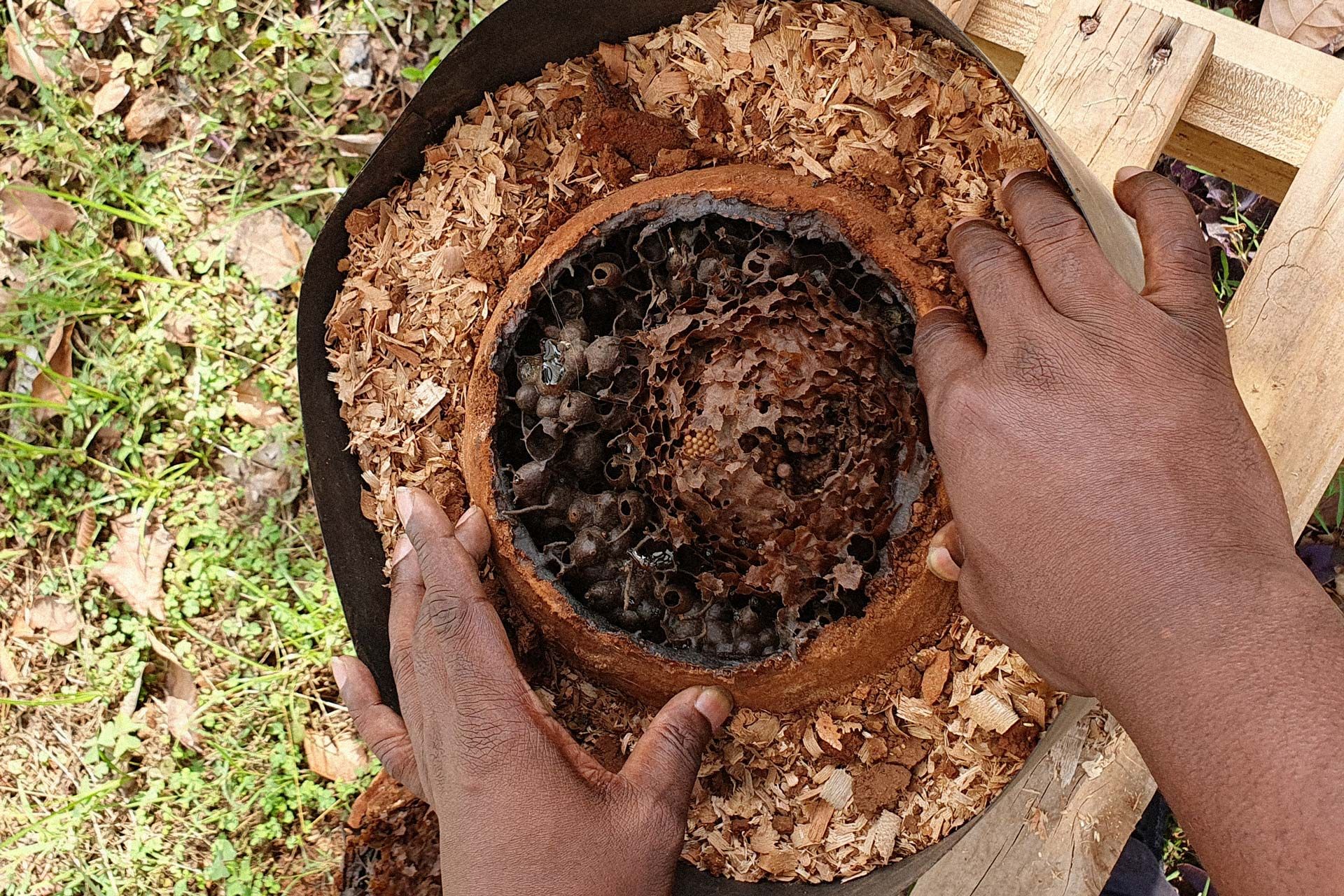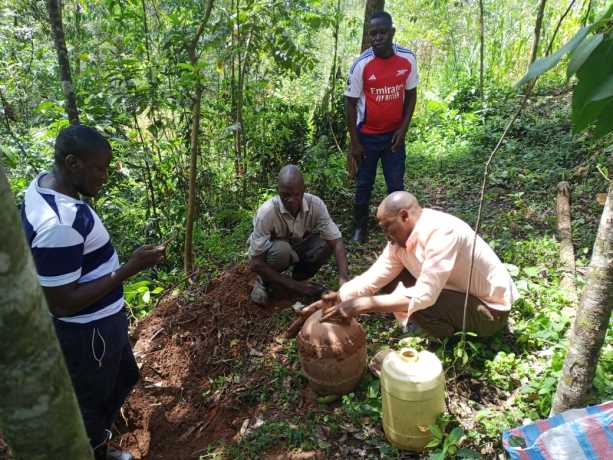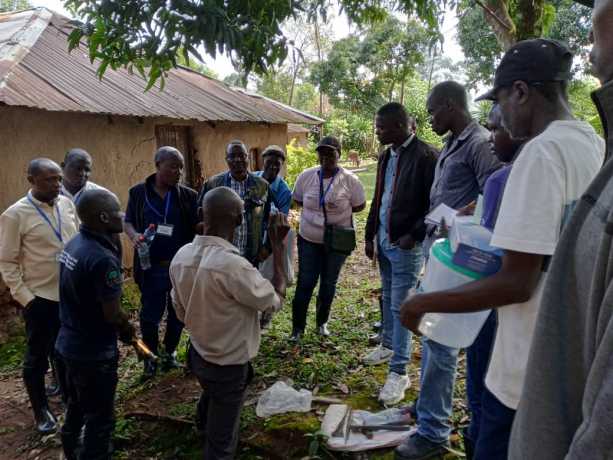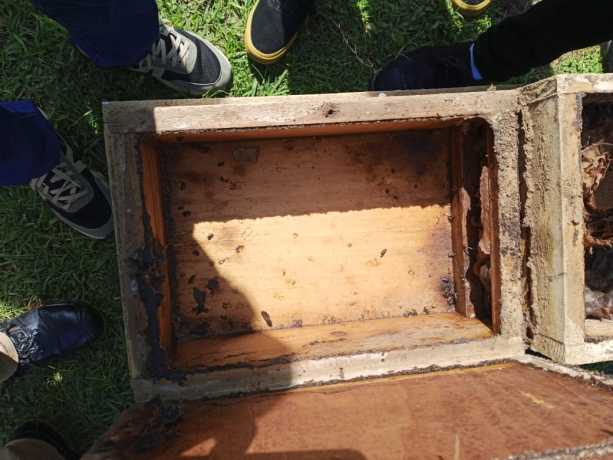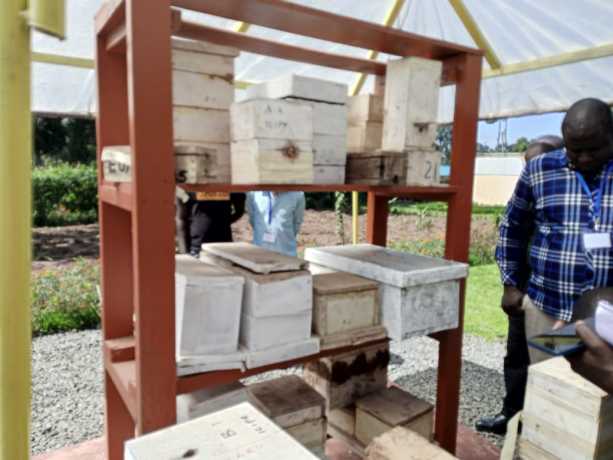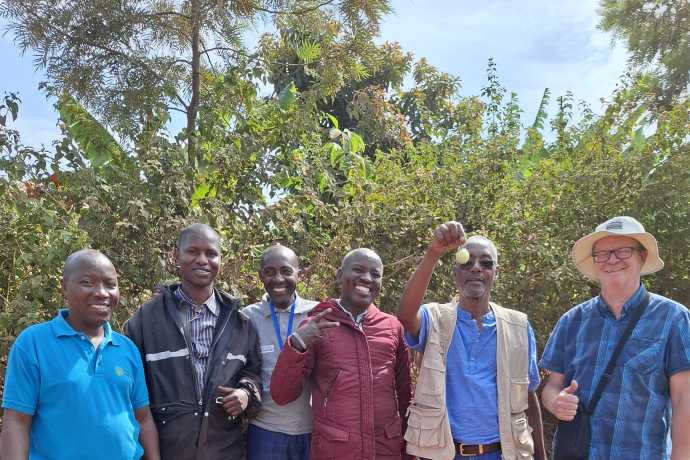At the end of last year, eight of our partners had the opportunity to participate in a 10-day intensive training on meliponiculture in the Kakamega Forest, Kenya.
The training aimed to introduce new activities into our projects to diversify agricultural production while integrating forest protection as a key component. It sought to create income-generating opportunities by promoting stingless beekeeping as a sustainable and profitable activity, emphasizing the importance of balancing economic development with environmental conservation.
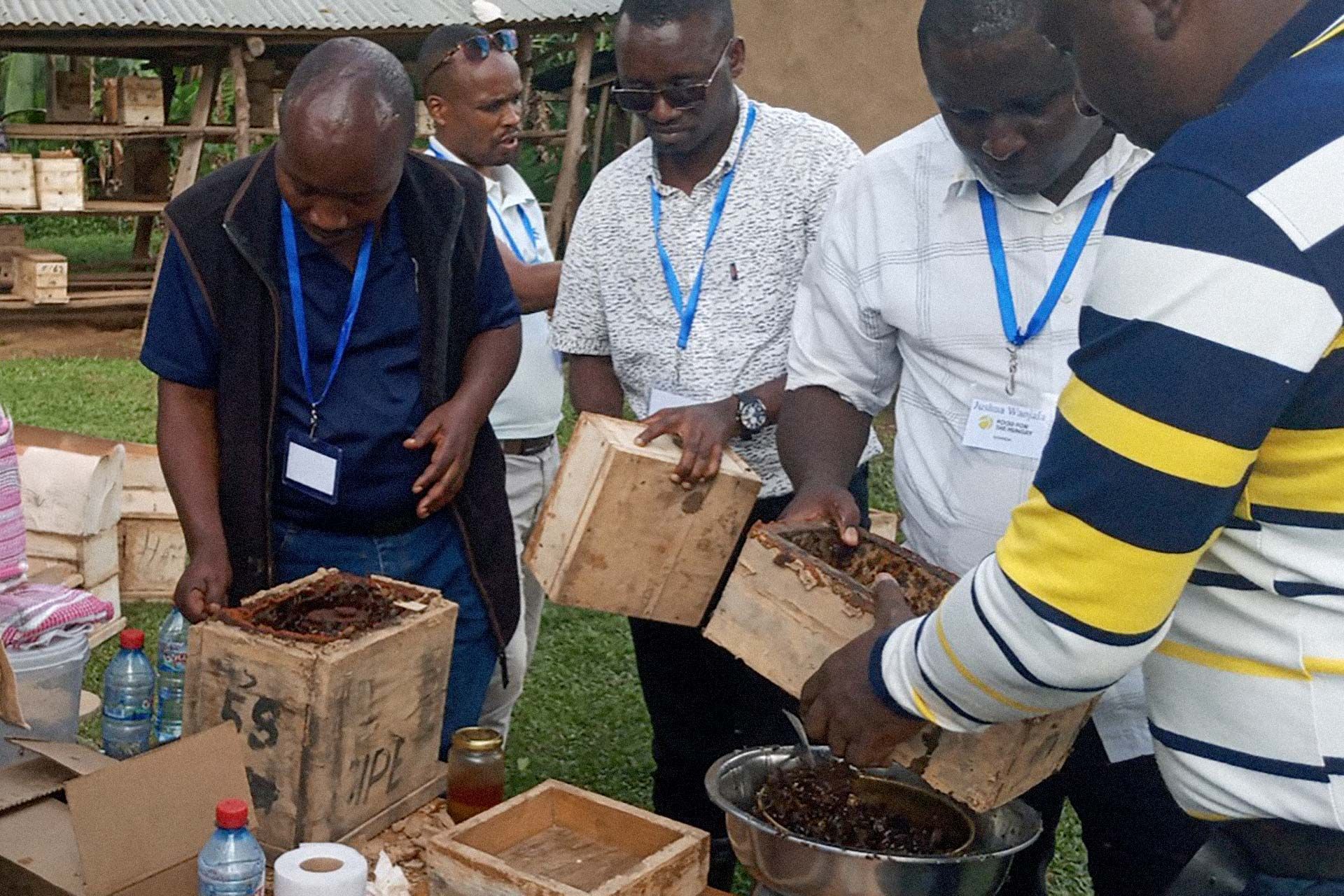 Discovery of stingless beehives
Discovery of stingless beehives
The training covered the following topics:
- Identifying different species of stingless bees
- Understanding the various hive models adapted to different species
- Finding and recognizing natural hives without cutting down trees
- How to attract bees to the hives
- Managing bee colonies in hives
- How to split a colony
- Harvesting honey from stingless bees
- How to mature honey for preservation for up to two years
- Common pests and how to manage them
Robinson M., Program Manager for Agroecological Initiatives at FH Uganda, participated in the training on stingless bees:
"Stingless bee farming contributes to enhancing biodiversity and creating economic opportunities for small-scale farmers. Additionally, it can improve their food security and nutrition.
It can also improve the health of community households, as stingless bee honey has medicinal properties, including anti-cancer, antitussive, and anti-inflammatory benefits".
 Identification of colonies by observing the entry point of the Meliponella ferruginea species on the walls of houses.
Identification of colonies by observing the entry point of the Meliponella ferruginea species on the walls of houses.
 Nesting of new colonies from species that establish their colonies inside termite mounds.
Nesting of new colonies from species that establish their colonies inside termite mounds.

